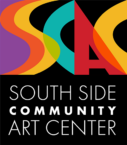Writer, imagist, and artist, Seed Lynn, submits memory work as a liberatory practice. Whether sensually, technically, or artfully applied, Lynn meets the lens as a travelin’ state where listening and witnessing make voice timeless. And true.
This light invades his work, finds and frames subjects honestly, and creates brave space where stories find students. Lynn’s own studies concern how we remember ourselves, how that memory is imaged, and how remembrance itself, in the face of oppression, is a cathartic and radical act of protest.
We hope you’ll join us for what will be a memorable moment for you and your family!
NOTE:
We are prioritizing families who do NOT have studio family portraits, so we ask that you only reserve a space for you and your family if this applies to you. Portraits will be organized through 15-minute time blocks, with limited availability, so RSVP is required!
if for any reason you cannot make your timed reservation, please notify us right away so that we may open a slot to another family.
*notices can be made to SSCAC Programs Manager: zakkiyyah@sscartcenter.org





